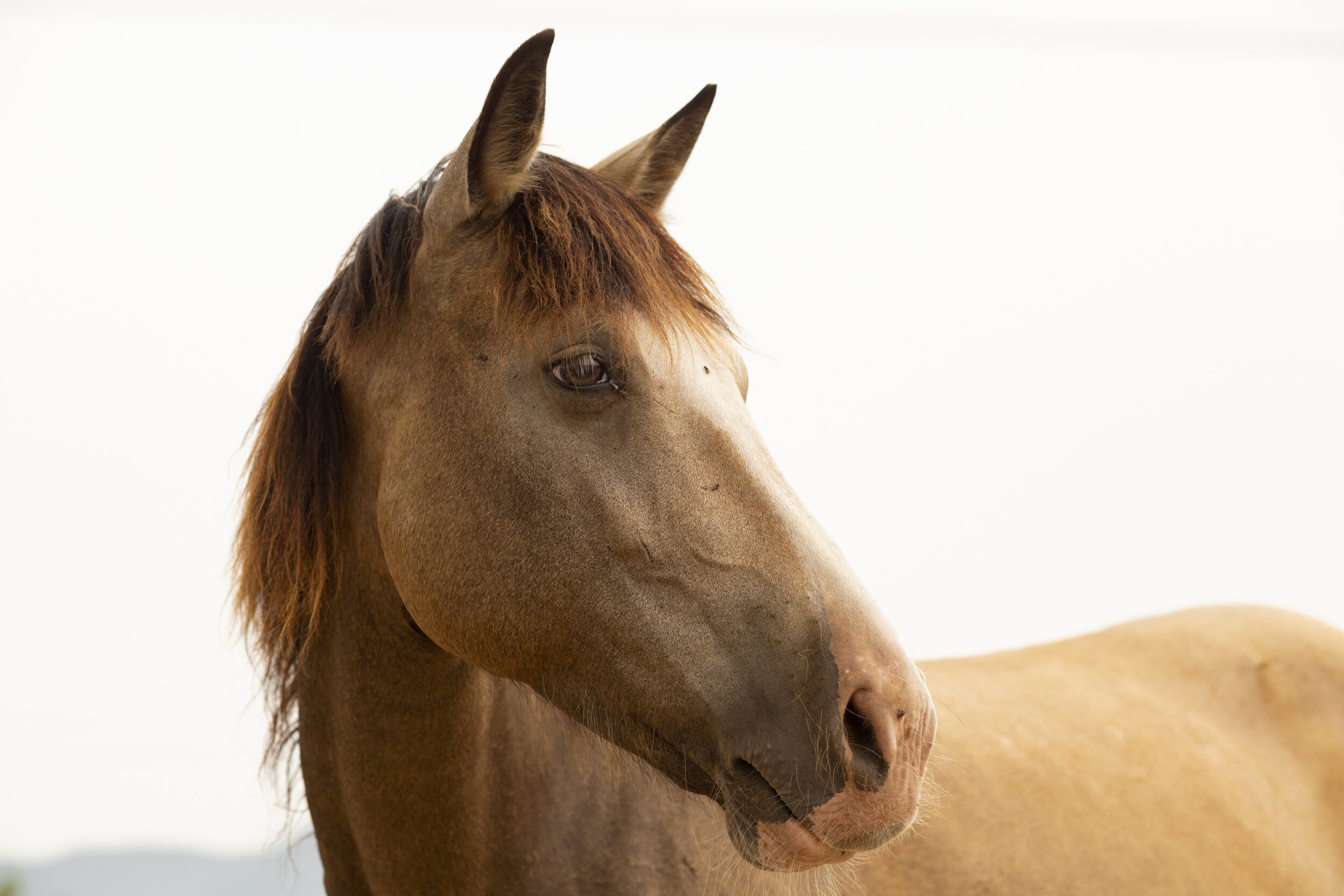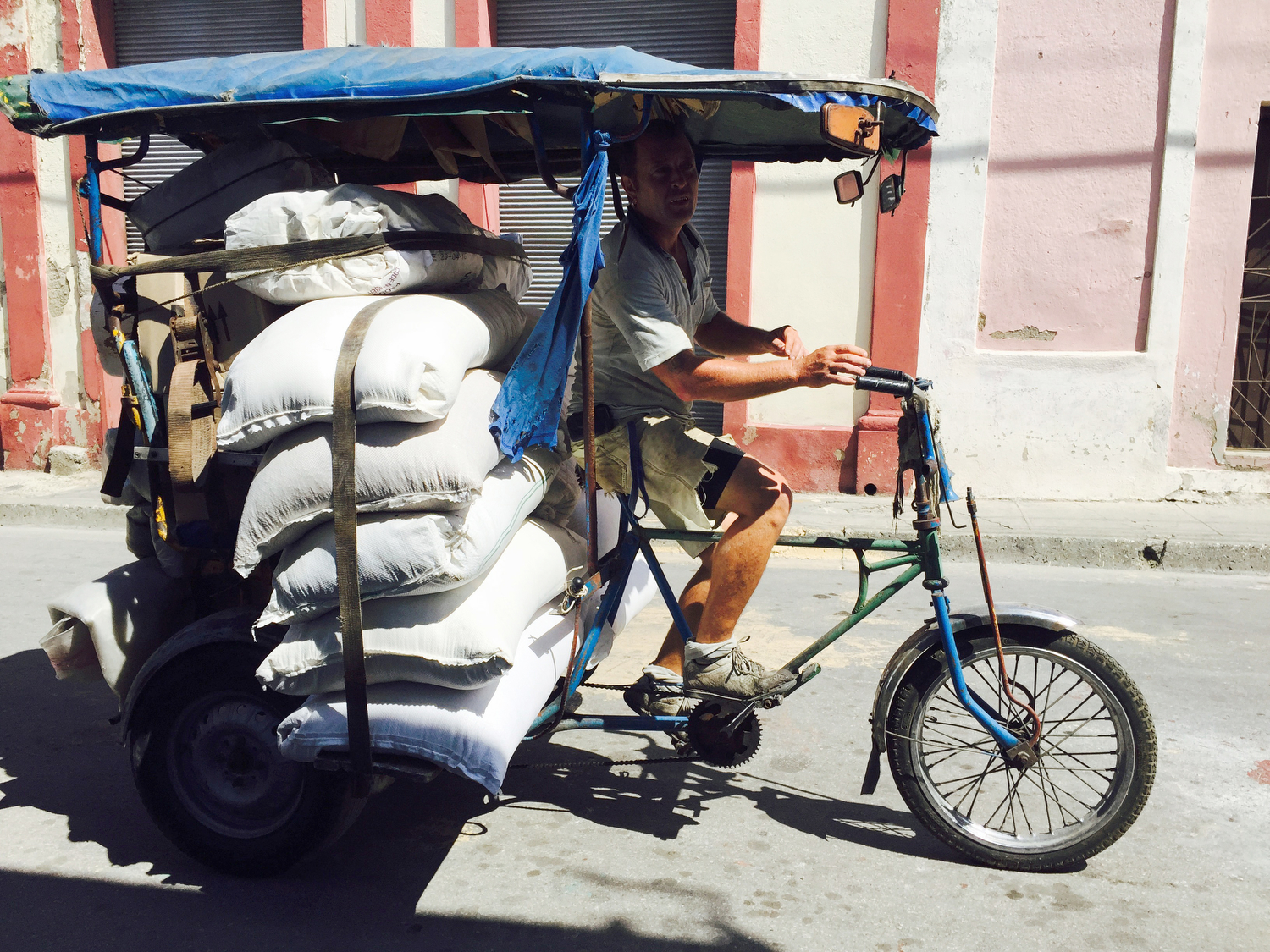Luna gazes over the valley with a 360-degree view span as she stands near a sandy old pick-up truck. Bo and Skyler run by, hurrying to lay in the shade while Luna watches over the valley. The sun doesn’t seem to bother her.
Her hooves rise up as she rolls her body back and forth, covering her coat in glimmering sand and golden specks of mica. She kicks up dust. Luna struts on a three-acre ranch nestled between an estuary and the Pacific where a ranch owner helps Luna learn to trust again.
Izzy, a blind horse, and Luna wait for their breakfast at sunrise at Tina Jo’s Promise, a horse rescue ranch located in Baja California.
Dawn Stephens, a California native, grew up caring for horses on her parents’ ranch. She didn’t realize she’d go 40 years without having them in her life, as she pursued a career in Sport Psychology.
Now she dedicates her life to helping horses like Luna live a better life on her ranch in Baja California.
Luna, the tan colored mare with inquisitive eyes, stands at the corner of the wooden fence to watch the sunrise with its purplish hues rising over the edge of the mountain. She seems to watch the sun’s brilliant colors spill into the sky with the same spellbound awareness humans do.
Life wasn’t always this way for Luna.
Over a year ago Stephens got a call to rescue Luna from Southern Baja. She was wild, pregnant, and covered in thick dry mud. Luna trusted no one. She was accidentally bred by a beautiful stallion, and deemed worthless by her owner. Luna was fated to be sold for meat after her baby was weaned.
During her rescue Stephens fed pregnant Luna carrots through a fence to slowly gain her trust. It took hours to get Luna into the trailer to take her to her new home at Tina Jo’s Promise.
In the Beginning
Dawn and her wife, Tina Jo Stephens, started their rescue with a horse they named “Lover Boy” who they found tied up on the side of the road. He was skin and bones, and covered in scars. Together they rescued a few more horses, including a mare they tried to save that would change their lives forever.
She came from the mountains, and was dying of complications from an old gunshot wound. Tina Jo comforted the horse in her final moments promising her that her life wouldn’t go in vain, that they’d continue to help horses in her memory. They named her Promise, leading to what would become Tina Jo’s Promise.
The Stephens’ initial goal was to start a horse hospital, but they couldn’t get it off the ground. So they kept it as a horse rescue ranch to bring food, shelter, and love into the lives of traumatized horses.
Dawn Stephens looks over a horse bite wound on Atticus who suffered severe abuse before coming to her ranch at Tina Jo’s Promise. “Atticus has my heart,” she said.
They tried equine therapy for kids with physical and psychological disabilities, and for children from orphanages and impoverished homes. Dawn recalls a moment when Jem, a giant spotted white horse, gently leaned his head down to comfort a child survivor of abuse during a session, as if to say “I’m here to comfort you.”
The children with physical handicaps were able to sit up on the horses, giving life to muscles they otherwise wouldn’t use. Dawn watched one child with a brain injury, who couldn’t walk or sit up-right, be able to do so on his own after only his third session. His parents cried in astonishment at their son’s unexpected achievement.
“One year I thought my mission was to rescue horses, but it turned out my mission was to rescue horses to rescue kids.”
The opportunity to continue the equine therapy classes came to an end after a year due to funding and location changes, but she didn’t give up hope.
“It broke my heart though,” she said. “I had fallen in love with these kids and the good that we could do.”
New visions
Her strong sense of giving keeps her motivated despite dreams that may have eluded her.
“We looked at what we can do,” Dawn said.
Nathaniel Stephens, age 8, learns from his mom Dawn Stephens how to properly care for the horses at the rescue ranch.
The Stephens plan to give teens from local orphanages opportunities they may never otherwise have by starting a trade school on her ranch. Kids will be offered workshops to better prepare them for life beyond the orphanage, like welding and repairing, writing, art, sewing, and photography. Locals and expats can volunteer their expertise teaching, in a full-circle effort to give back to their community.
“It’s gonna be everything you should have learned being in a family, so they’re on equal footing with people who come out of a traditional family setting. They’ll have people believing in them.”
She envisions each teen graduating with their own equipment, such as welding masks, tool kits, and sewing machines, so they have a better start into the world on their own. Kids from the orphanage can opt to take basic language courses in English or sign-language to enhance their life skills and opportunities if they choose.
Sometimes she wonders why they still struggle to get financial support, but the horses and her desire to help kids keep her going.
It’s why singing to the horses and cleaning their corrals in the early morning brings Dawn some of her life’s greatest joys, when the sun and the moon hang in the sky together.
It’s where Jem, the giant gentle horse, waits for his breakfast under a pink sunrise sky making room for Dawn as she tidies his stall before the buttercream clouds roll in. A place where she has helped horses learn to trust again. “I just have one of those hearts,” she said. “I have dedicated my life to them.”
How you can help
It costs $7500 per year just to feed the horses. To help Dawn help horses and kids who deserve a better future, please consider donating to Tina Jo’s Promise by sponsoring a horse to help pay for hay, equipment, and other projects on the horse rescue ranch at http://tinajospromise.org/save-a-life/. Every donation - even a little - helps at Tina Jo’s Promise. Please donate what you can.
CLICK THROUGH THE PHOTO GALLERY DIRECTLY BELOW TO SEE 'A DAY IN THE LIFE AT TINA JO'S PROMISE'.
Tina Jo Stephens with Canela, one of their earlier rescue horses at Tina Jo’s Promise.















































